The application of compound probiotics in aquaculture of high-protein diet
- Categories:News Center
- Author:JBH Biotech
- Origin:Henan Jinbaihe Biotechnology Co.,LTD
- Time of issue:2022-03-14 15:02
- Views:
The application of compound probiotics in aquaculture of high-protein diet
- Categories:News Center
- Author:JBH Biotech
- Origin:Henan Jinbaihe Biotechnology Co.,LTD
- Time of issue:2022-03-14 15:02
- Views:
Complete feed is the most common diet needed by aquaculture animals to maintain body growth, especially in the growing period of aquaculture animals, it is necessary to feed a large amount of high-protein complete feed continuously to maintain stable growth rate. However, due to the high protein content and fat content in the process of aquaculture animals, the liver burden of aquaculture animals will be increased, leading to the occurrence of steatohepatitis. At the same time, due to the rising price of fish meal, in order to improve protein content, adding plant protein into the feed formula will lead to poor palatability of feed, and anti-nutritional factors in plant protein will also affect the growth performance of aquaculture animals.
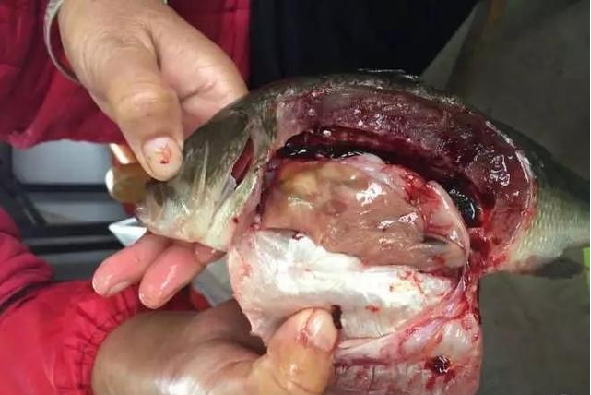
Probiotic is the active microorganism that can colonize the intestinal tract of the host and change the composition of the host flora. Currently in aquaculture, probiotics can be used as feed additive added to the high protein diet, by adjusting the host immune system function or by regulating intestinal flora balance, promote nutrient absorption, keeping the role of the intestinal health, promoting digestion and absorption of feeding diet, reduce the bait coefficient, reduce the residual baits, ammonia nitrogen is a class of feces pollution of water bodies.

Reasons for the formation of high protein diet
With the rapid development of aquaculture industry, the cultivation of carnivorous fish with complete feed instead of frozen fish can not only save cost, but also prevent the water pollution caused by the rotting of frozen fish. But with the change of the cultivation mode, high density intensive farming methods for the level of protein in the diet puts forward stricter requirement, especially for carnivorous fish, in order to meet the demand of its own growth, and must be used as high as 45% or more of the bait to satisfy its growth, it by its genetic nature and carnivorous diets. And because aquaculture animals to maintain normal growth, must meet the amino acid "barrel theory", so feed enterprises have to increase the protein content in feed, make feed in the "short board" essential amino acids to achieve the normal growth of aquaculture animals effective content.
The consequences of a high-protein diet
- Affect growth performance At present, special aquaculture animals such as bass, yellow Sang, mandarin fish, South America white shrimp, etc. Mainly for the omnivorous or predatory fish to feed the fish meal in the process of its growth depends on special big, but if use plant sex protein to replace fish meal, due to changes in feed flavor and smell, plant protein feed palatability, fish feeding rate is reduced, leading to slow growth of the fish, Bait coefficient increased. At the same time, most plant proteins contain anti-nutritional factors, such as trypsin inhibitory factor, erythrocyte agglutinin, phytic acid, gossygol, cyclic allyl fatty acid, glucosinolate, myucinic acid, aflatoxin and thiamine enzyme, etc. These anti-nutritional factors can not be well digested and absorbed in the intestinal tract, resulting in a decline in growth performance. The results showed that the growth performance of rainbow trout, Salmon, flounder and other aquaculture animals were decreased and the feed coefficient was increased when the plant protein soybean meal was added more than 20% to 30%. When the cottonseed meal was added to replace fish meal more than 30%, because of the presence of mustard oil in rapeseed meal, turbot. Rainbow trout, salmon, spotted fork tail and other high protein diet breeding species are affected by the growth. Compared with fish meal, plant protein lacks restrictive amino acids such as lysine and methionine, resulting in nutrient imbalance of amino acids, resulting in barrel effect and affecting the growth of aquaculture animals.
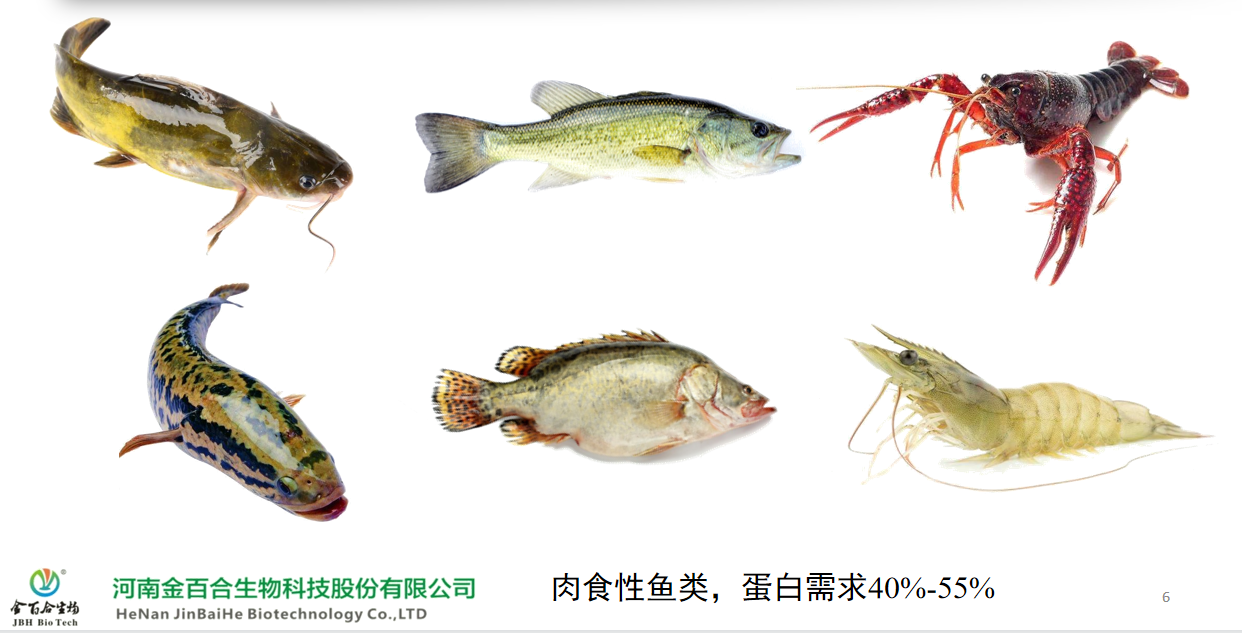
- Damage to the intestine Intestinal tract is an important basis for nutrient absorption of aquaculture animals, so the normal structure and function of intestinal mucosa are extremely important for nutrient digestion and absorption. However, due to the use of other proteins in the feed to replace fish meal, it is necessary to adjust the feed process to ensure the hardness of feed particles, when the feed particles become too hard, fish can not be digested in time after ingestion, but will cause scratches and other mechanical damage to the intestinal surface. Especially when the anti-nutritional factors in the feed can not be degraded by heating, such as soy globulin in soybeans will cause hypersensitivity to the intestinal tract of cultured animals, resulting in intestinal allergy and inflammatory reaction, resulting in increased intestinal mucosal damage, increased vacuole type and number, and increased submucosal inflammatory reaction. There are a large number of microorganisms in the intestinal tract. When anti-nutritional factors such as oligosaccharides in high-protein diets cannot be well digested and absorbed, they will accumulate and stick to liquefy in the intestinal tract, forming an intestinal environment suitable for pathogenic bacteria, leading to disruption of intestinal homeostasis and intestinal inflammation. In the early stage, amino acids are mainly used for the synthesis of fish growth proteins. Fish, especially carnivorous fish, are very sensitive to restrictive amino acids. With the continuous improvement of replacement level, intestinal tract cannot absorb nutrients well, which is also the reason for the decline in growth performance.
- Damage to the liver The liver is one of the largest immune organ, aquatic animals need a variety of harmful substances in the body through the liver decomposition, thereby converting metabolites to urea eduction body outside, once the liver damage or pathological changes tend to cause fish nutrition metabolic disorders, immune system disorder, disease resistance to drop, and easy to cause other secondary outbreaks, cause massive death of fish. The unreasonable of feed nutrition often can cause liver disease, such as the existence of the peanut meal in feed, may cause feed mildew, when fish feeding such feed, aflatoxin will cause damage to the liver, at the same time when the high protein content of feed, increase liver digestion burden, cause adipose accumulation at the same time, destroy the liver tissue morphology, Cause liver disease. Studies show that when using plant protein to replace fish meal, can induce liver oxidative stress reaction, in order to avoid the body oxide free radical damage, gradually increased as the amount of replacement and antioxidant protection mechanism of antioxidant enzyme activity such as lower than that of fish meal group, aspartic acid transaminase (GOT) and at the same time the body alanine transaminase (GPT), It means the liver cells are damaged and the liver function is impaired. There is a very important two-way communication pathway between the intestine and liver called the "enterohepatic axis". Simply put, it is the pathway that substances go back and forth between the intestine and liver, which is an "axis" that can influence each other. So the liver can affect the gut, and the gut can affect the liver. The intestinal barrier function is the first line of defense for foreign harmful substances to invade the body. When the intestinal barrier function is impaired, the intestinal mucosal permeability increases, resulting in foreign harmful substances entering the blood circulation and reaching the liver, resulting in the occurrence of liver inflammation. When the liver is diseased, the hematopoietic function of the liver is damaged, resulting in reduced intestinal blood flow and hemorrhagic necrosis of the intestine.
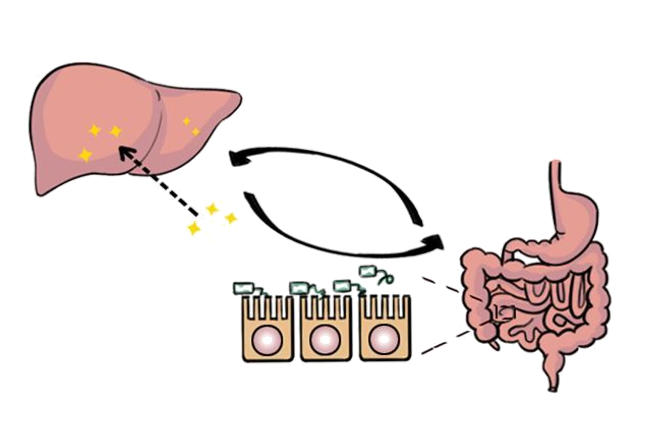
- Pollution of water and environment Aquaculture animals live in water, and the changes of water environment affect the health of aquaculture animals. When excessive amounts of protein in the feed, the liver to exclude protein is converted into urea in vitro, at the same time due to the adding of the plant protein feed palatability, remnant in water quantity increase, or because of the existence of antinutritional factors of feed to feed digestion rate is not high, of excrement and urine protein content is higher, under the action of microorganisms in the water, ammonia nitrogen and nitrite content increased, When nitrite is absorbed by fish, it combines with hemoglobin to produce methemoglobin, which loses its oxygen-carrying capacity, resulting in reduced appetite of cultured animals, weakened disease resistance, and even a large number of deaths in serious cases. When the ammonia nitrogen content in the water exceeds the standard, it will hinder the excretion of ammonia in aquatic animals, corroding the gill tissue of fish body, and seriously damage the deep tissue, resulting in difficulty breathing and suffocation of fish. Non-ionic ammonia at the same time also can damage the liver and kidney tissue of the fish body, makes "enterohepatic axis" hypofunction, feed cannot be good digestion and absorption, and even lead to farmed animals feeding, again lead to the rise of water body of ammonia nitrogen, nitrite, form a vicious circle, cause mass death of farmed animals, caused economic losses.
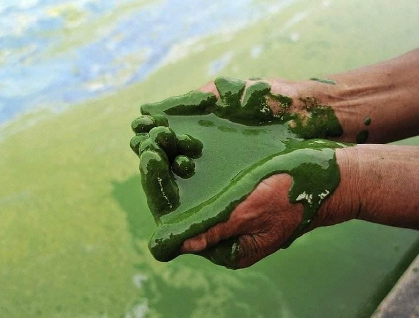
Common probiotics in aquaculture
Probiotics in aquaculture has been used for many years, currently in aquatic photosynthetic bacteria, lactic acid bacteria, bacillus, yeast, butyric acid bacteria such as clostridium belong to apply more extensive, not only can be used as feed additive increase aquaculture animal immunity, relieve the high-protein diet for liver and intestinal tract, promote animal growth performance, reduce the loss of the feed Can also be fermented after splashing water, play a role in regulating water quality.
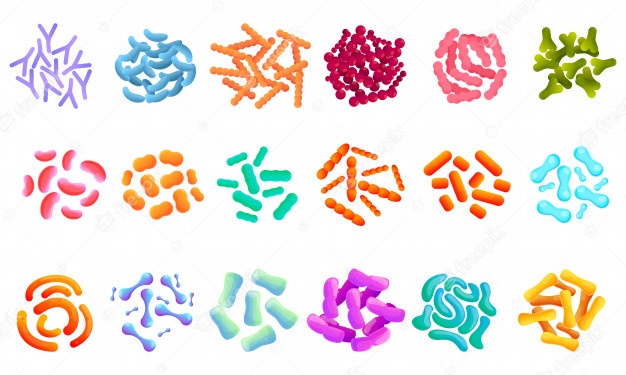
- PBS(photosynthetic bacteria) --- Photosynthetic bacteria are prokaryotes with primitive light energy synthesis system that appear earliest on earth and are ubiquitous in nature. They are the general name of bacteria that carry out anaerobic photosynthesis under anaerobic conditions. They are gram-negative bacteria without the ability to form spores. It is a kind of microorganisms that use light as energy and can use organic matter, sulfide and ammonia in nature as hydrogen donor and carbon source under anaerobic light or aerobic dark conditions to carry out photosynthesis. At present, the photosynthetic bacteria is rhodopomonas marshalis which is widely used in aquaculture. In aquaculture, photosynthetic bacteria can degrade nitrite, sulfide and other toxic substances in water, and realize the functions of acting as bait, purifying water, preventing diseases, as feed additives and so on. Photosynthetic bacteria have strong adaptability, can tolerate high concentration of organic wastewater, phenol, cyanide and other poisons have a certain tolerance and decomposition ability, has a strong decomposition and transformation ability. Fu Baorong put a certain amount of photosynthetic bacteria into carp culture water, and found that it could obviously remove organic matter and NH4+-N in water, increase the content of DO, and stabilize the pH value of water. Moreover, it can increase the proportion of beneficial algae such as diatoms and green algae, inhibit heterophylla dominated by cyanobacteria, and inhibit pathogenic bacteria such as vibrio and aeromonas.
- Lactobacillus --- Lactic acid bacteria is a group of bacteria that can use fermentable carbohydrates to produce large amounts of lactic acid. This kind of bacteria usually belongs to the spore - free, Gram-positive bacteria, in nature is extremely widespread, including at least 18 genera, more than 200 species. Lactic acid bacteria can play a probiotic role through organic acids produced by fermentation, various enzymes, lactobacillin and other substances. A large number of studies have shown that lactic acid bacteria can promote the growth of aquatic animals, regulate the normal flora of gastrointestinal tract, maintain the balance of microecology, so as to improve gastrointestinal function and improve food digestibility. It can control intestinal endotoxin, inhibit the growth of pathogenic bacteria and improve host immunity. Qiu Jinmu et al. cultured Tilapia with Enterococcus faecalis and found that with the increase of enterococcus faecalis concentration in feed, the anti-superoxide anion in serum of Tilapia showed an increasing trend. The results showed that enterococcus faecalis supplementation can enhance the immune capacity of oreotilia, increase the number of intestinal beneficial bacteria, and improve the intestinal health of oreotilia.
- spore bacteria --- Bacillus is a group of Gram-positive, strictly aerobic or facultative anaerobic, capsular bacilli that can form spores (endophytic spores) and are widely distributed in soil, water, air and animal intestines. Because the spore has a thick and low water content of multi-layer structure, so the refraction is strong, not easy to dye, good stability, oxidation resistance, extrusion resistance, high temperature resistance, long-term tolerance of 60℃ high temperature, can survive at 120℃ for 20min, and acid and alkali resistance, can maintain activity in gastric acid environment. In the process of aquaculture, born within bacillus spores form, when the spores enter the intestinal tract, can be in the upper intestinal quickly raised secretion and activity of protease, lipase, amylase, help to degradation of plant feed in some complex carbohydrates, antagonism in the intestines of oxygen, cause anaerobic environment, is conducive to maintaining the ecological balance. At the same time, bacillus can be directly used in aquaculture water, which can consume a large amount of organic matter in water, decompose it into small molecular organic acids, amino acids, and ammonia substances, supply single-celled algae growth, improve water quality. It was found that in the experiment of purification of water quality of penaeus vannaeus rearing pond by Bacillus subtilis, COD, nitrite and H2S concentrations in the rearing pond were significantly lower than those in the control pond, while total alkalinity was significantly increased, indicating that the water quality was significantly improved.
- Yeast --- Yeast is a group of unicellular, spheroidal or ellipsoid, propagating by budding or splitting way of eukaryotic cell microorganisms. In the presence of oxygen, yeast can break down sugar into carbon dioxide and water, and yeast grows faster. When oxygen is scarce, yeast gets energy by converting sugars into carbon dioxide and alcohol. Yeast is suitable to grow in the environment of polysaccharide and acidic, rich in protein and a variety of B vitamins, not heat resistant. Yeast and its culture can effectively improve gastrointestinal environment and bacterial community structure, promote nutrient digestion and absorption, inhibit the propagation of pathogenic bacteria, improve the body's resistance to disease, improve the quality of aquatic animals. The results showed that the extracellular polysaccharides produced by three yeast strains (HS-J6, HS-J8 and HS-J9) from the intestine of sea cucumbers were fermented. It was found that adding polysaccharides in the diet could improve the activity of intestinal digestive enzymes and promote the growth of sea cucumbers. And yeast protein content is high, generally 40% of cell dry weight, and easy to digest, so yeast can be used as a feed additive to produce feed yeast to partially replace fish meal.
- Clostridium butyricum --- As the "king of intestinal probiotics", Clostridium butyricum has gradually been widely accepted by people. Clostridium butyricum, also known as casein bacteria, is a gram-positive anaerobe of Clostridium and Bacillus family that was discovered and isolated from feces by Dr. Koji in 1933. Therefore, clostridium butyricum is also called "palace bacteria". Clostridium butyricum can improve animal growth performance, enhance host immunity and regulate intestinal flora balance in aquaculture. The experiment showed that the specific growth rate of rainbow trout could be significantly increased by Adding Clostridium butyricum into the feed for 40 days, reaching 1.41%/d, while the feed coefficient was reduced to 1.08. However, when the supplemental level of Clostridium butyricum was 109CFU/g, the activities of lysozyme, acid phosphatase and phenol oxidase in serum and body surface mucilage were increased, the concentration of IgM in plasma, the level of complement C3 in serum and the respiratory burst activity of phagocytes were significantly increased. In vitro experiments, when Clostridium butyricum and Vibrio anguilli were co-cultured, Clostridium butyricum could reduce the adhesion rate of Vibrio anguilli by 7.03%, indicating that Clostridium butyricum could effectively inhibit the adhesion of vibrio anguilli and other pathogenic bacteria in the intestinal tract and reduce the incidence of intestinal inflammation.
Application of compound bacteria in high protein diet
The advantage of compound probiotcs
The aquatic environment of aquaculture animals is complex and diverse. For aquaculture water, in order to maintain stable water quality, ensure that the proportion of C, N and P in aquaculture water stability, you need to use different strains play different functions, such as the use of lactic acid bacteria degradation of organic matter, water release C source, the use of bacillus subtilis degradation of N source of water, phosphate-solubilizing bacteria release P sources, etc. Moreover, the proportion of beneficial bacteria and pathogenic bacteria in water environment is 7:2:1. Therefore, the use of single probiotics for water quality regulation has relative limitations compared with compound probiotics. In Chen juhong's experiment, the regulation effect of compound probiotics on ammonia nitrogen, nitrite and algae quantity was evaluated through breeding experiment.
The experiment showed that compared with photosynthetic bacteria, yeast, potent EM and Bacillus, the pond ammonia nitrogen content of the compound probiotics group decreased gradually, and the nitrite content of the compound probiotics group decreased on the 18th day of the experiment. The results of the effect on algae quantity showed that the algae quantity in the combined probiotics group was significantly higher than that in the other groups from day 9, which was twice as high as that in the other groups. The results showed that the compound probiotics group had obvious ammonia-nitrogen reducing properties and could effectively increase the number of algae.
Similar to the human gut, the composition of bacteria in the gut of different fish species varies greatly. It was found that the bacteria mainly existed in the intestinal tract of freshwater fishes were aeromonas, Pseudomonas, Bacteroidetes TYPE A, Orthoonomonas, Micrococcus, Acinetobacter, Clostridium, Bacteroidetes type B, Fusarium and enterobacteriaceae.
Vibrio, Pseudomonas, achromobacter, corynebacterium, alteromonas, flavobacterium and micrococcus were found as the main bacterial species in Marine fish. Ji zhongshi found that the silver carp and aristichthys nobilis have small intestines in the same water body.
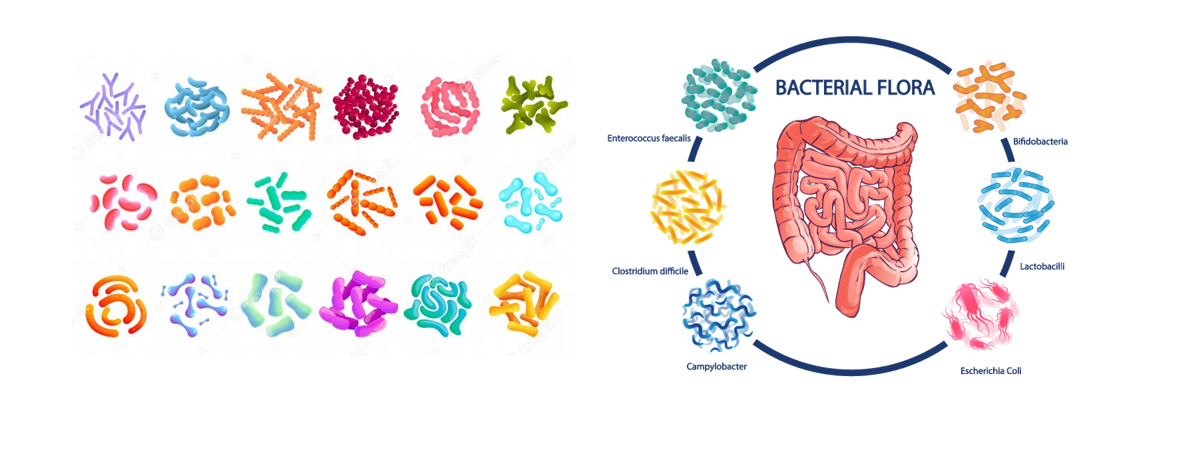
The function and application of Aqua combo ( compound probiotics including Clostridium butyricum )
Aqua combo is a functional probiotics product mixed with clostridium butyricum, lactobacillus, bacillus and yeast as the main bacterial community, and the products of solid fermentation with Clostridium butyricum, lactobacillus and Bacillus, such as organic acids, complex enzymes and other prebiotics. When the product is used in aquaculture site, it can induce food to promote growth and reduce stress; Bacteriostasis intestines, enhance immunity; Protect liver and intestines, repair intestines; Reducing ammonia nitrogen and improving water quality. Because the metabolites in tebutai are rich in organic acids and have a full sour and fragrant taste, they can effectively improve the palatability of feed and improve feeding. Probiotics such as Clostridium butyricum can quickly colonize the intestine, improve the intestinal environment, inhibit the growth of pathogenic bacteria, and regulate the intestinal balance. At the same time enhance the intestinal barrier function, improve the body immunity. In particular, the metabolites contain butyric acid, and butyric acid is the power source of intestinal cells of aquatic animals, which can effectively promote the rapid repair of intestinal tract of animals, and reduce the occurrence of white stool and white stool phenomenon. When in use process, can be directly to douse after fermentation, can effectively decompose organic matter, the degradation of ammonia nitrogen, hydrogen sulfide, nitrite and other harmful substances, inhibit the harmful bacteria and harmful algae in the water (dinoflagellates, naked algae) and algae breeding, and adjust the water balance of bacteria and algae, is advantageous to the growth of aquaculture animal health.
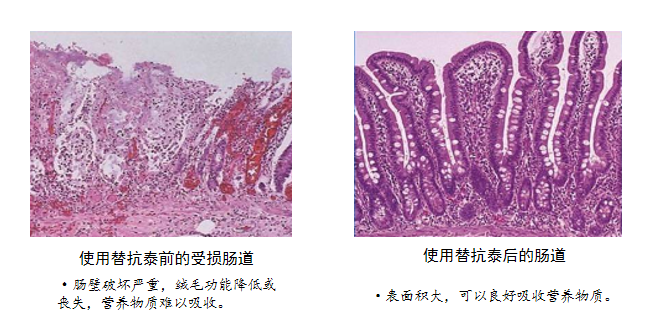
Service Hotline:
Tel:+86-371-61779068
Phone:+86-18602468822
WhatsApp:+86-15717345927
Skype: +86-18639087551
Email:melody@jbh2013.com
Add: Fudao Town, tangyin county, Anyang City, Henan Province
Copyright © 2020 Henan JBH Bio-Tech Co., Ltd 豫ICP备15035929号 Business License Powered by : www.300.cn SupportedIPV6

